Anthony Arkwright: The Killer Who Craved Infamy — But Nobody Knows His Name
Have you heard of Anthony Arkwright?
Most people haven’t. Yet his crimes were among the most shocking Britain has ever seen—calculated, brutal, and committed with deliberate cruelty. But Arkwright didn’t just kill; he performed. He staged grotesque crime scenes, boasted about his murders in pubs, and taunted the police with playing cards—as if it were all just a twisted game.
Such remorselessness demanded the harshest punishment, and the justice system responded with a whole-life tariff, ensuring he would never walk free again.
Yet despite his efforts to secure infamy, he is barely remembered. He wanted to carve his name into history.
Instead, history erased him.
This article contains descriptions of violent or distressing events – reader discretion advised
Background: The Troubled Path to Murder
Anthony Arkwright was born in 1967 to parents Zoe and Dick. The middle child of five siblings, he was raised in the working-class mining town of Wath-upon-Dearne in Yorkshire.
When Arkwright was four years old, his parents divorced, and his mother left the family, abandoning her children to their father’s care. However, with Dick working long hours as a miner, he had neither the time nor the desire to properly raise his five children. As a result, Arkwright spent much of his childhood in children’s homes, where anger and resentment began to take root, shaping the disturbed individual he would become.
Arkwright’s deep-seated anger was only fuelled by whispers that he was the product of an incestuous relationship between his mother and her father—his grandfather. Though Zoe would later refute the claims, the rumours added another layer to his growing alienation, shaping his warped sense of identity.
Arkwright quickly spiralled into delinquency, his behaviour becoming increasingly erratic and confrontational. He struggled academically, and he was soon expelled from school. He gained a reputation for violence and defiance, and his descent into crime was inevitable.
He was well-known to the police and was frequently arrested for crimes such as vandalism, burglary, theft, and arson. His crimes escalated further when, as a teenager, he broke into an elderly man’s home and terrorised him with a toy pistol.
By his late teens, he had already spent 30 months in borstal, where even child psychiatrists struggled to manage his behaviour, followed by a further eight months in prison at 18 years old. Yet, despite these frequent spells in custody, his aggressive tendencies only worsened.
While incarcerated, Arkwright developed a disturbing obsession with serial killers. He spent hours poring over books in prison libraries, meticulously studying the lives and crimes of infamous murderers such as Peter Sutcliffe and Jack the Ripper, whom he idolised. This fascination went beyond mere curiosity; it became something he absorbed and internalised, shaping the methods he would later employ in his own crimes. He admired their ability to evade capture—but above all, the infamy they achieved. He frequently boasted to fellow inmates and acquaintances that one day, he too would be notorious.

By the age of 21, Arkwright was living in a council flat on Denman Road in Wath. He remained a petty criminal and a bully, notorious for volatile outbursts and frequent disputes with his neighbours.
His fixation with violence had reached disturbing levels. Seeing himself as a survivalist, he fantasised about joining the SAS and amassed a collection of weapons, storing them at his flat. He built hidden dens across the area, where he would sit for hours, dressed in military clothing and armed with a hunting knife, lost in sadistic fantasies of harming or killing those he despised—including his grandfather, whom he suspected was his father, and his neighbours Marcus Law and Raymond Ford.
Marcus Law was a 25-year-old wheelchair user, left paralysed by a motorcycle accident at 19. He lived in a specially adapted bungalow on Denman Road. Arkwright harboured a growing resentment toward him, irritated by his frequent requests for cigarettes. By the end of August 1988, their tensions had escalated, boiling over due to something as insignificant as a packet of cigarettes.
Raymond Ford was a 45-year-old former teacher who lived in a flat just 40 yards from Marcus Law’s bungalow. Raymond had spent time working overseas, but declining health left him unable to work, and his life soon spiralled into isolation and depression. Living alone in squalid conditions, he drowned his misery in cheap cider, rarely leaving his home except to buy alcohol and a newspaper.
Arkwright tormented Raymond relentlessly, smashing his windows and shoving dog excrement through his letterbox, and eventually breaking into his home, where he stole an antique clock and a microwave.
Raymond reported the burglary to the police and named Arkwright as the culprit. However, in doing so, he unknowingly signed his own death warrant.
On August 26th, 1988, Arkwright was dismissed from his job at a scrapyard in Mexborough, where he had worked nights constructing railway tracks. His poor attendance and bad attitude had cost him his position.
His employment history had always been erratic, defined by short-lived stints in low-paid menial jobs. His volatile personality, frequent absences, and aggressive behaviour made him virtually unemployable. As a result, he rarely held a job for long, relying instead on petty crime and benefits to get by.
Just hours after his dismissal, Arkwright launched into a 56-hour killing spree—a brutal rampage that cemented his legacy as one of Britain’s most sadistic murderers.

The Killing Spree
On the afternoon of Friday, August 26th, 1988, Anthony Arkwright, freshly dismissed from his job and seething with resentment, collected his severance pay and embarked on a drunken pub crawl through Mexborough. By 4:15 pm, intoxicated and consumed by fury, he stewed over his many grievances—his neighbours, his impending arrest for burglary, and the persistent rumours about his mother’s supposed incestuous relationship with his grandfather.
For years, Arkwright had fantasised about becoming as infamous as Jack the Ripper, and within hours, he would finally act on those dark ambitions.
Stasys Puidokis and Elsa Konradite
***Please note: There are different spellings of Stasys Puidokis’ name, including variations like Stanislav Pudoikas and Stasys Puidokas due to transliteration differences. I’ve chosen one for consistency, but you may see it written differently elsewhere.
Arkwright’s first target was his 68-year-old grandfather, Stasys Puidokis, who had moved to England from Lithuania in the 1950s. For years, Arkwright had harboured the delusional belief that Stasys was actually his biological father—a twisted notion fuelled by childhood taunts and rumours.
Failing to find Stasys at his home on Ruskin Drive in Mexborough, Arkwright headed to his prized allotment a mile away, where he found his grandfather peacefully tending to his vegetables.
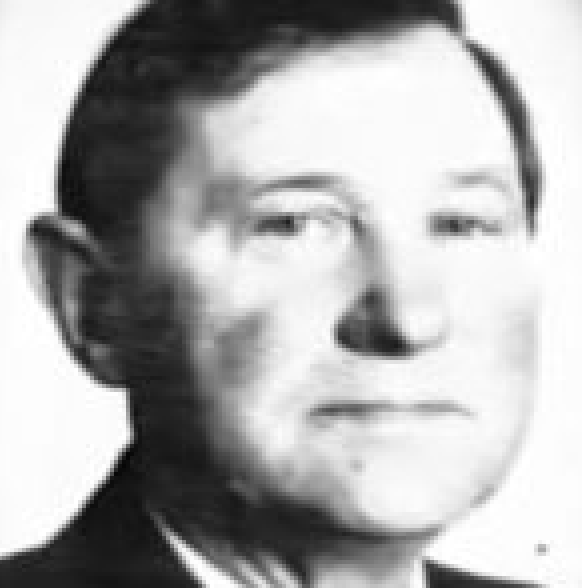
Without warning, Arkwright attacked, driving a knife into his grandfather’s neck with such force that it severed his spinal cord, leaving him paralysed. Dragging the helpless man into a nearby shed, Arkwright bound and gagged him before grabbing one of his grandfather’s axes and embedded it into his chest. He then grabbed a heavy lump hammer and delivered the final, brutal blows, shattering his skull. Locking the door, Arkwright walked away, leaving his grandfather’s body inside.
Desperate for money and filled with rage, Arkwright returned to Stasys’s house, intent on stealing his life savings of £3,000. However, when he got there, he found his grandfather’s housekeeper, 72-year-old Elsa Konradite at the property, quietly ironing in the kitchen. Stasys and Elsa had lived together for 24 years and had two Yorkshire terriers.
What happened next was never proven in court, but Arkwright allegedly attacked Elsa, smashing her skull with an axe. Arkwright then ransacked the house, stealing a range of valuables, including money, his grandfather’s pocket watch, and other personal possessions, before fleeing the scene.
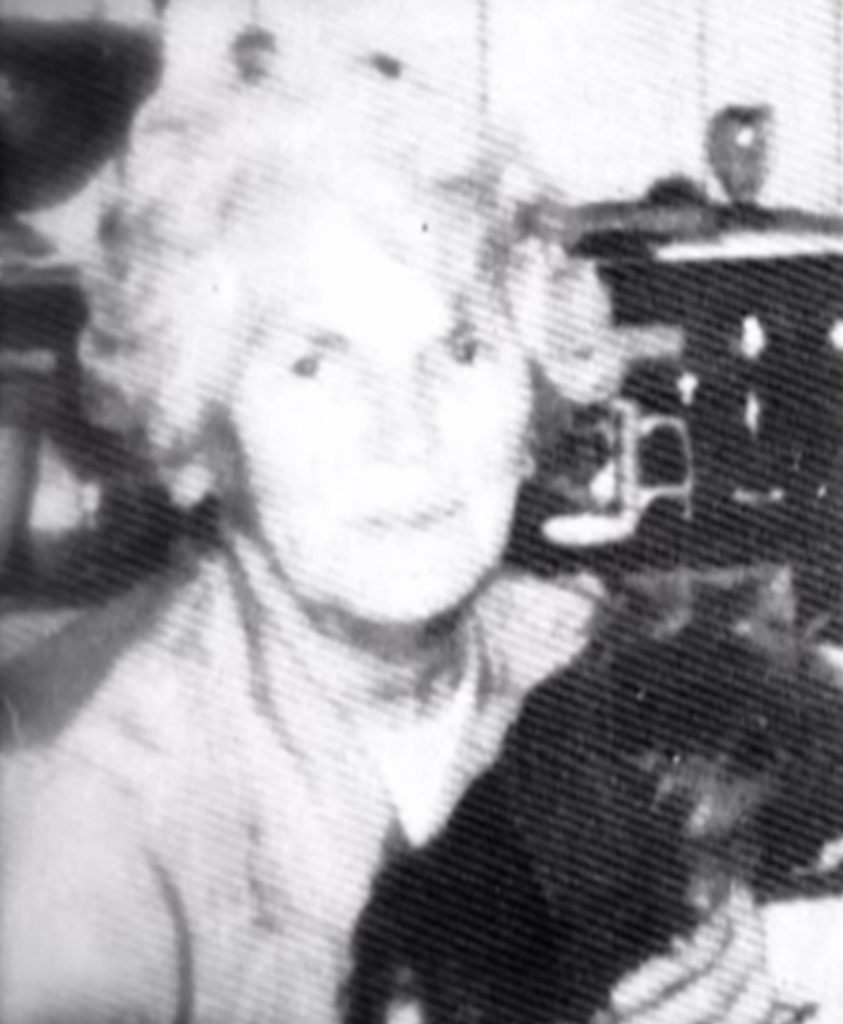
When the police later discovered Elsa’s body, one of her Yorkshire Terriers was shivering in distress – but unharmed – beside her.
Arkwright spent the rest of the evening moving between bars, his behaviour becoming increasingly erratic. Witnesses described him as wild-eyed and aggressive, picking fights and thriving on confrontation.
He dropped chilling hints about his crimes, casually telling one barman:
“It’s been murder on the allotment today.”
Another recalled Arkwright boasting:
“I’ll see you in 25 years. I’ve just done two murders.”
It was clear that he wasn’t hiding his actions—he was revelling in them, basking in the shock and horror he provoked.
By the end of the night, his violent urges were still simmering away. He even told his neighbour, Neil Hirst, that he was going to kill one of his neighbours, Marcus Law.
By 3 am, Arkwright stumbled home, drunk, but his killing spree was far from over.
Raymond Ford
Still enraged that his reclusive neighbour had reported him to the police for burglary, Arkwright decided that Raymond Ford would be his next victim.
In the early hours of August 27th, he entered Raymond’s flat through a broken window–one he himself had smashed days earlier by hurling a dustbin through it. Stripping down to his underpants, allegedly to avoid leaving forensic evidence, he then put on a surreal devil mask before creeping through Raymond’s home.

Raymond was slumped in his armchair in the living room, heavily intoxicated. What followed was an act of prolonged savagery so gruesome that even seasoned detectives struggled to stomach it. Arkwright proceeded to stab Raymond between 250 and 500 times, snapping the knife in the process. Undeterred, he fetched another blade and continued his assault. Raymond stood no chance. If he had woken during the attack, his final moments would have been filled with terror. The last thing he would have seen was a masked monster looming over him.
Arkwright, however, wasn’t done. In a gruesome imitation of his idol, Jack the Ripper, he next proceeded to gut and disembowel Raymond, scattering his organs around the house and arranging his entrails around the room like macabre decorations.
“It was the most brutal act of slaughter I have ever seen,” recalled retired Detective Inspector Bob Meek. “It’s all the more chilling when you realise he must have spent at least half an hour inflicting those wounds.”
This was an indulgent killing. It wasn’t frenzied, but calculated, methodical, and deeply sadistic. Arkwright revelled in the power and control his violence gave him.
Afterwards, he calmly returned home, showered off the blood, and went to bed.
Just four hours later, he was woken by the police banging on his front door. They had come to arrest him. However, not for any of the three murders he had committed, but for his burglary of Raymond Ford. In fact, the police were completely unaware of the carnage lying undiscovered nearby.
After several hours of questioning about Raymond’s burglary, Arkwright was released on bail and ordered to appear in court the following week.
The police had no idea they had just released a killer back on the streets.
Marcus Law
Arkwright spent the rest of Saturday evening drinking. By the early hours of August 28th—just 24 hours after brutally murdering Raymond Ford—he turned his attention to his other neighbour, Marcus Law. Breaking into Marcus’s specially adapted bungalow, Arkwright stabbed him more than 70 times. Trapped in his wheelchair, Marcus stood no chance against the attack.
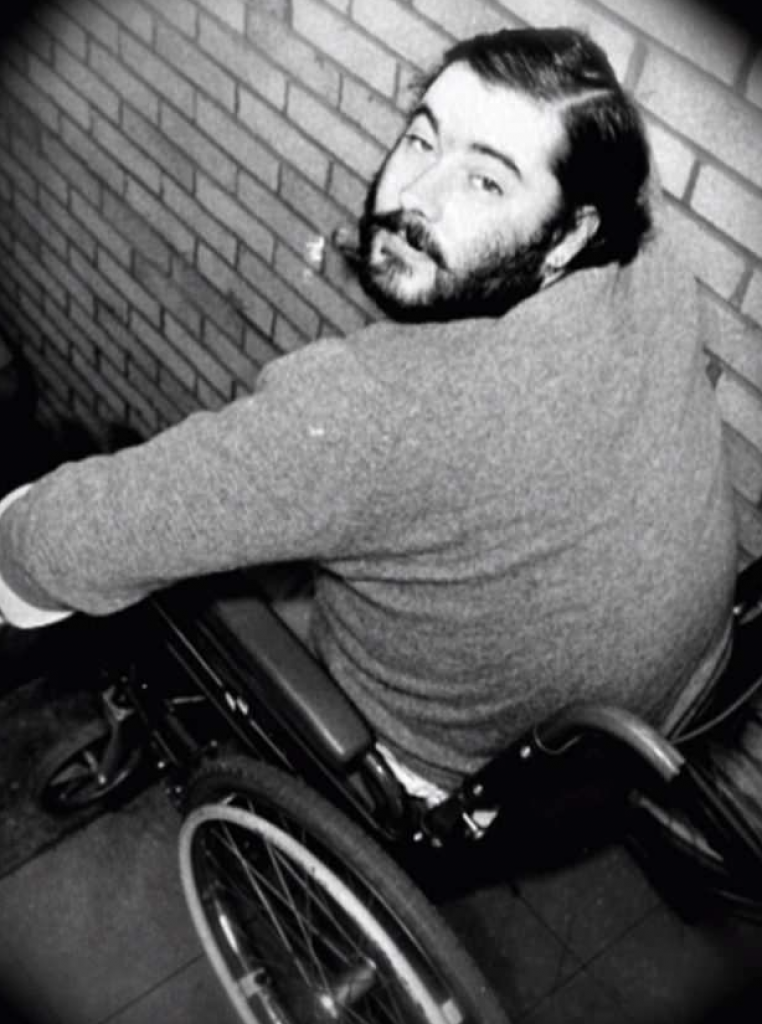
Obsessed with mimicking his idol, Jack the Ripper, Arkwright then attempted to disembowel Marcus. When his crude, frenzied efforts failed, frustration took over. He grabbed one of his victim’s own crutches and rammed it into the gaping wound in his stomach.

But even more horror was to come. Arkwright stuffed unlit cigarettes into Marcus’s nostrils, ears, and mouth. He then gouged out Marcus’s eyes before stuffing more cigarettes into the empty sockets. Officers would later describe Marcus’s corpse as resembling “a grotesque birthday cake.”
This wasn’t just murder. It was a deliberate statement that Arkwright was in control, and he could do whatever he wanted.
The next morning, Arkwright crossed paths with Marcus’s mother, Peggy Tavender. He callously smirked at her, saying, “Sorry about poor old Marcus. He’s killed himself.”
Horrified, Peggy rushed to Marcus’s bungalow and discovered her son’s mutilated remains.

The Investigation
It didn’t take long for the police to piece things together. Having implicated himself, Arkwright was arrested just hours later, though he denied Marcus Law’s murder. Throughout his questioning, he seemed to have total disregard for the plight he was in, enjoying the interrogation and the attention it brought him. With scant evidence for the police to go on, he was held in custody while they urgently pursued various leads.
The Grim Discovery of Raymond Ford
As part of their inquiries, officers visited Raymond Ford’s home, aware that Arkwright was due in court for burglary charges. They knocked, but when Raymond failed to answer, they inexplicably left without investigating further—despite the broken window and a TV still playing inside, clear warning signs that something was terribly wrong.
It would be another two days before officers returned and finally entered through the shattered glass. And once inside, they stepped into a scene of unimaginable horror.
The corridor was strewn with empty cider bottles and discarded rubbish, signs of Raymond’s depression and deteriorating mental state. Yet among the disorder, there was evidence of something far more terrible.
A devil mask lay abandoned on the ground, discarded where Arkwright had thrown it. But more sinister still were Raymond’s dismembered organs, strewn across the room in a grotesque display of violence—a crime so brutal that even seasoned investigators struggled to process what they were witnessing.
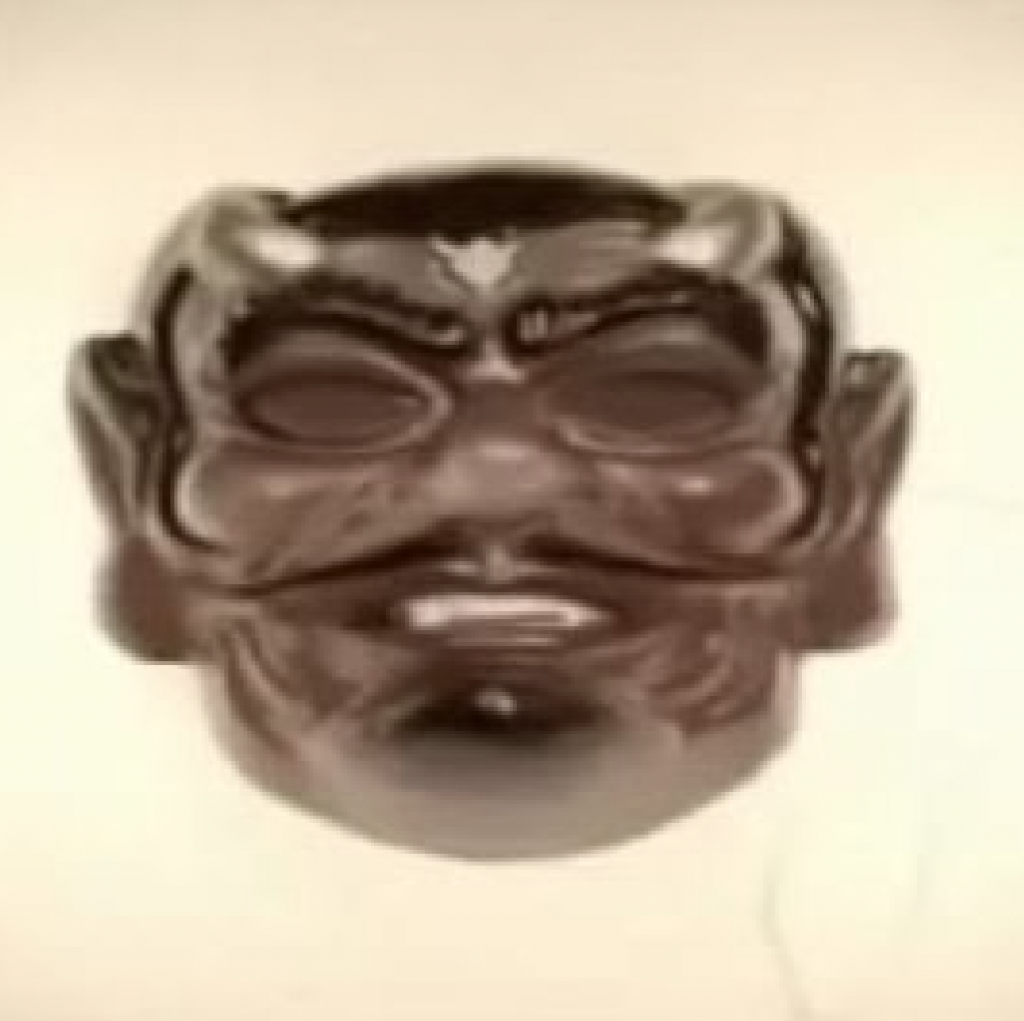
Blood spattered the walls, and the central heating was on, filling the sweltering flat with the overpowering stench of decay.
When officers reached the bedroom, they found Raymond Ford’s mutilated body buried beneath a pile of clothes in the corner of the room.
PC David Winter later recalled:
“There was blood on the walls. I opened the bedroom door, and I thought there was this pile of clothes in the corner but there was this body underneath this and all the bits and pieces I’d seen in the hallway, that was all his all his organs. He’d removed just about every organ in his body.“
Raymond had been not only murdered, but butchered, his body systematically dismembered in an act of pure sadism.
Arkwright’s Chilling Revelation
Still under interrogation, Arkwright maintained his calm, mocking demeanour. But then, things took a surreal turn.
Unaware that the police had already discovered two bodies, he casually shuffled a deck of playing cards and claimed to be psychic. Then, with unsettling composure, he flicked through the deck and pulled out the four of hearts. He then chillingly declared:
“This is the master card. It means you have four bodies and a madman on the loose. You’ve found one of these, but there are three more. I can see Marcus Law, but the others are indescribable. They are just too horrible to describe.”
The detectives stiffened. Four bodies? They had only found two—which meant two more victims were waiting to be uncovered.
The Search for More Victims
The investigation led officers to Arkwright’s grandfather’s house, where they intended to question him about his grandson’s movements. However, they had no reason to expect the horror that awaited them inside.

Upon entry, officers found Elsa Konradite, the 72-year-old housekeeper, brutally bludgeoned with an axe in the kitchen, one of her terrified dogs lying faithfully by her side.
Following a tip from concerned neighbours, officers then proceeded to Stasys’s allotment, where they discovered the butchered remains of the 68-year-old man in his blood-soaked shed. The second Yorkshire Terrier was also found trapped inside, though was thankfully unharmed.
Arkwright’s final tally stood at four victims. But his twisted game with the police wasn’t finished yet.
A Twisted Game of Cat and Mouse
With all four bodies discovered, most killers would have started to crack under pressure. But Arkwright was loving every second of the attention. This was his moment to shine, and the chance to cement his place as a notorious killer.
There may be no more bodies to find, but he didn’t want the game to end. So, he fabricated a fifth victim. As a result, officers began futile searches of the local area, including abandoned properties and waterways.
Thankfully, despite the waste of police time and resources, this was nothing more than an empty taunt—there was no fifth victim.
But still, Arkwright continued toying with officers and playing games. At one point, he asked an interviewing officer to name the tune he was humming. The officer hesitated before replying, “Strangers in the Night.” Arkwright told him he got it right and was now prepared to cooperate. Every interaction was about control. About proving he was the one in charge.
Confession & Theatrics
After days of interrogation, Arkwright finally confessed to three murders: Stasys Puidokis, Raymond Ford, and Marcus Law. However, despite admitting to standing over Elsa Konradite with an axe in his hand, he never explicitly confessed to killing her.
Charged with murder, Arkwright was remanded to HMP Hull while awaiting trial. But even behind bars, his craving for notoriety remained unchecked. In a disturbing protest, he smeared his cell walls with faeces, demanding recognition as a notorious killer.
Transferred to Rampton Hospital in Nottinghamshire, he was closely monitored as forensic specialists sought to understand his motives. Later, during the trial, Mr Justice Boreham revealed that three esteemed psychiatrists had assessed Arkwright, each concluding that he posed a significant and lasting threat to the public.
Despite extensive evaluations, experts did not diagnose him with a psychotic disorder. Instead, forensic specialists branded him an “evil fantasist”—not mentally ill in a clinical sense, but consumed by a pathological hunger for notoriety.
While losing his job at the scrapyard may have triggered his spree, his behaviour displayed clear signs of severe personality disturbance, rather than insanity. His theatrical boasts on nights out, the grotesque staging of his crime scenes, and his chilling desire for infamy suggested a man entirely aware of his actions, yet utterly devoid of morality or remorse.
Arkwright wasn’t driven by delusions or psychosis. He killed because he wanted attention, recognition, and ultimately, a twisted form of legacy.
Ultimately, Arkwright was declared “the sanest person in the building” and deemed fully fit for trial.
Legal Proceedings
Arkwright saw both the pre-trial proceedings and the trial itself as opportunities to feed his ego. Outside the courtroom, he revelled in the attention, smirking for cameras and mocking bystanders who hurled abuse at him, demanding he be hanged. However, their hatred was entertainment to him.
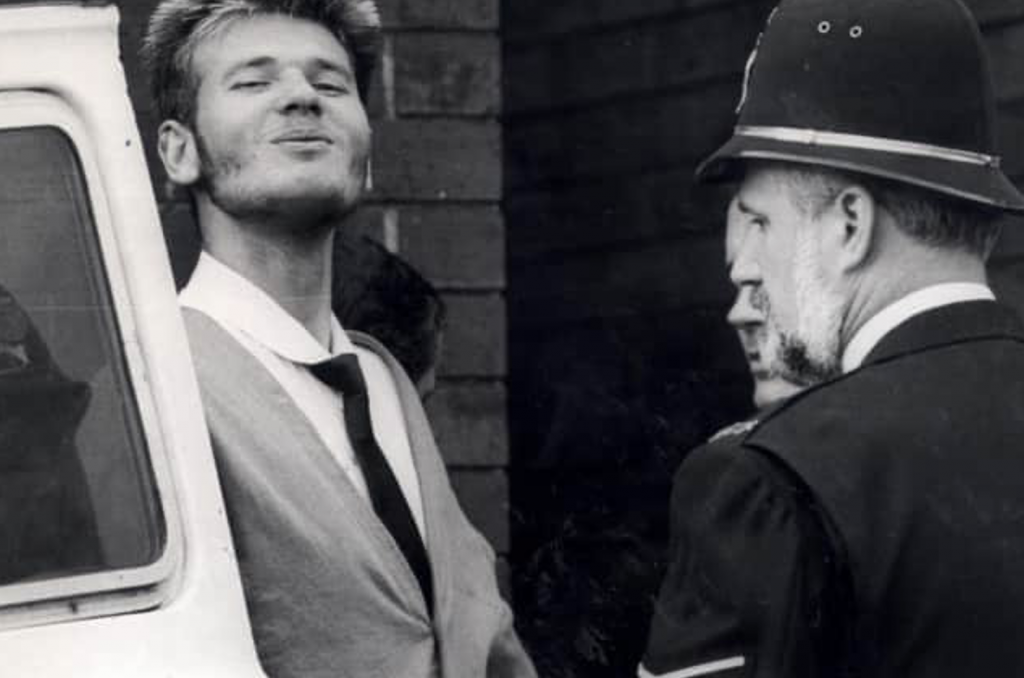
Inside the courtroom, he crafted his own performance, dressing the part in white socks, cut-off jeans, a dinner jacket, and a red bow tie. His arrogant behaviour throughout the proceedings was so mocking and theatrical that many in the legal profession found it deeply insulting.
In July 1989, Anthony Arkwright stood before Sheffield Crown Court, initially pleading not guilty to four counts of murder. However, he later changed his plea to guilty for three of the killings, continuing to deny responsibility for the murder of Elsa Konradite.
With insufficient evidence to proceed, Mr Justice Boreham ordered the charge to ‘lie on file’, meaning it would remain unresolved but could be reopened if new evidence ever emerged.
Sentencing & The Defence’s Argument
During sentencing, Arkwright’s defence counsel, James Chadwin, argued that his client was mentally unstable, citing his deeply troubled upbringing as a contributing factor.
“Arkwright is a young man who suffers from severe personality damage and disorder. He has shown signs of disturbance since the time his mother left him when he was four years old.”
This was an assessment Arkwright agreed with. In a rambling, disjointed fifteen-minute speech, he attempted to justify his actions, blaming his mental state on a disturbed childhood, ultimately ending with the words:
“We were born to live in a world of love.”
However, it wasn’t an apology. It wasn’t an explanation. It was yet another grotesque act of self-indulgent theatrics. His final attempt to bask in the attention he craved.
In the end, the court remained unmoved. Because of his admission of guilt, the trial moved swiftly to sentencing.
Arkwright was sentenced to life imprisonment with a recommended minimum term of 25 years.
However, a year later in 1990, the then Home Secretary, Jack Straw, intervened. Viewing the original sentence as dangerously lenient, he upgraded Arkwright’s punishment to a whole-life tariff—a sentence reserved for Britain’s most dangerous criminals. This meant Arkwright would never be eligible for parole. He would never be released.
Arkwright was just 21 at the time of the murders, making his whole life sentence a rare and decisive move. Most young offenders are considered capable of rehabilitation, but his crimes were too calculated, too devoid of remorse. He was deemed too evil to be given a second chance, and authorities ruled that he should die behind bars.
Had the original sentence been upheld, Arkwright could have been released in 2013 and walking free today. Instead, he remains locked away, his twisted dream of notoriety reduced to nothing more than a footnote in British criminal history.
Aftermath
Despite her absence in Arkwright’s early years, mother and son eventually reconnected, but their relationship remained volatile.
During one visit to her father’s home, Arkwright threatened Zoe’s young daughter with a dagger. When Zoe ordered him to leave, he turned on her, vowing to kill his own mother.
For this reason, she firmly believed that had her son not been caught, she would have been his next victim.
Following his conviction, Zoe later came forward in media interviews to refute rumours that her father, Stasys Puidokis, was also Arkwright’s biological father.
Though she confirmed that Stasys had sexually abused her as a child, she insisted that Arkwright was not the product of incest—his father was her first husband, Dick Arkwright.
She revealed that her father’s abuse had begun when she was five, escalating until he was jailed in 1960 for indecent assault. Despite the trauma, she later reconciled with him, choosing to forgive and forget.
In her media statements, Zoe recalled that two months before the murders, police arrived at her home, inquiring about Arkwright’s father. She was stunned when they revealed that her son had filed a police report, claiming that Stasys was his father—a claim she said left her feeling humiliated.
According to Zoe, Arkwright fabricated the incest claim to shift the blame away from himself.
In 2002, fourteen years after the murder of Marcus Law, his father, Tony Law, took his own life. He was found in the garage of his home, having poisoned himself with car exhaust fumes.
The grief of losing two sons had consumed him. It wasn’t just Marcus’s violent death—Tony had already endured the loss of another son, Marcus’s brother, who had taken his own life in 1973 at just 13 years old. The weight of both tragedies became impossible to bear.
Tony’s death became another cruel consequence of Arkwright’s actions—a reminder that his brutality extended far beyond the victims he directly claimed. The devastation he left behind was not just one of violence, but of profound, unending sorrow.
Today, Arkwright remains incarcerated, serving his whole-life tariff with no possibility of release. Some reports suggest he is held at Shrewsbury Prison, but his exact location is unconfirmed—and ultimately, it does not matter. His dream of notoriety never materialised. He sought a lasting legacy, yet he has faded into obscurity, remembered only by those whose lives he destroyed. He imagined himself as Britain’s most feared killer, yet he is simply another prisoner who will die in his cell, forgotten by all but the families he devastated.
What matters now is ensuring that the focus remains on his victims. They deserve remembrance far more than the man who sought infamy, only to become nothing at all.
Sources
Murderpedia. Anthony Arkwright.
Sky TV. Britain’s Most Evil Killers. Season4, Episode 9.
They Walk Among Us Podcast. UK True Crime: Spree Killer / Anthony Arkwright, 17 May 2023.
Tivyside Advertiser. Tragic dad haunted by son’s murder.
True Crime Enthusiast. When Life Means Life – The “Four Of Hearts” Murders.
Yorkshire Live. The twisted Jack the Ripper fantasist who went on a 56-hour killing spree in South Yorkshire.
Yorkshire Post. Evil Doncaster serial killer who murdered three people in 56 hours is focus of new TV documentary.
